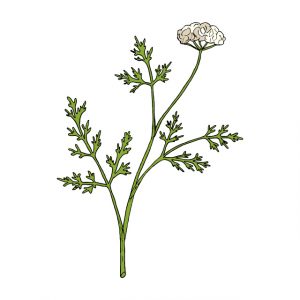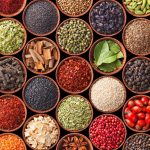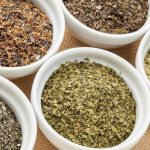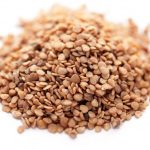- Herbs.news
- Fresh.news
Cnidium – sources, health benefits, nutrients, uses and constituents at NaturalPedia.com
Monday, September 11, 2017 by Earl Garcia
http://www.naturalnewsherbs.com/2017-09-11-cnidium-sources-health-benefits-nutrients-uses-and-constituents-at-naturalpedia-com.html
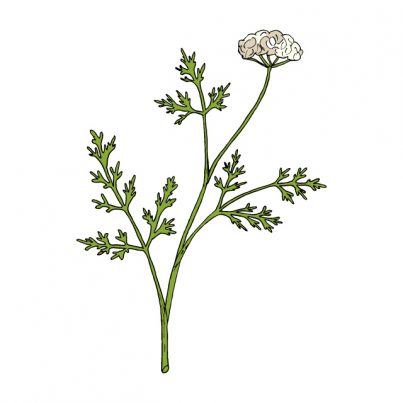
Cnidium is a fragrant annual plant that is native to China, Vietnam, Laos, Siberia,and Eastern Europe. The herb belongs to the same family as parsley. Cnidium has long been used in traditional Chinese herbal medicine. The plant is characterized by its erect, cylindrical stem with longitudinal edges and sparsely fine pubescence. Cnidium sports pinnatifid leaves and white obovate flowers. The plant blooms between April and July, and usually bears fruits from June to August.
List of known nutrients
Separate articles posted on Examine.com and the Herbpathy website list the constituents found in cnidium. These include:
- Alpha-Pinene
- Bergapten
- Beta-Sitosterol
- Camphene
- Cindimol
- Cnidimarin
- Cnidimonal
- Coumarins
- Deoxymeranzin Hydrate
- Formylxanthotoxol
- Glucides
- Hydroxytorilin
- Imperatorin
- Isopimpinellin
- Karentin
- Limonene
- Moniterpene
- Osthole
- Palmitic Acid
- Sesquiterpenes
- Torilin
- Torilolone
- Umtatin
- Xanthotoxol
Medicinal uses for cnidium
Cnidium is traditionally used to address various diseases of the male reproductive system. It is a well-known aphrodisiac that increases libido and sex drive and addresses impotence and erectile dysfunction. Previous studies have shown that the osthol compound in cnidium helps release nitric oxide, which in turn relaxes the corpus cavernosa of the penis. This results in an increased blood supply to the genitals.
An article on the Chinese Herbs Healing website notes that using the herb either internally or externally may help address premature ejaculation, genital eczema, and postpartum uterine prolapse. The plant may also relieve infertility issues in both men and women.
The herb is found to protect the female reproductive health as well. The plant contains strong antiseptic and disinfectant properties that relieve vaginal discharge and vaginal inflammation caused by trichomoniasis, a parasite-induced sexually transmitted disease. Cnidium is also notably effective in keeping yeast infection at bay.
The plant’s antiseptic properties are also touted to alleviate various skin conditions such as rashes, eczema, and scabies. Likewise, cnidium is highly effective in addressing bacterial and fungal infections such as ringworm, according to an article on the e-Medicine Health website.
Other skin diseases addressed by the plant include chronic, non-healing skin ulcers, allergic dermatitis, sumac allergy, tinea manus, and tinea pedis. For this reason, cnidium is as commonly added component to different skin care products such as lotions, powders, or ointments.
In addition, cnidium is shown to increase energy and promote body building, which is particularly beneficial to the muscular system. The herb is also known to fortify weak bones and prevent the onset of osteoporosis.
Body systems supported by cnidium
Cnidium is best known for its beneficial effects in boosting men’s sexual health and fertility. Likewise, the plant is especially useful in maintaining a healthy female reproductive health. In addition, the herb helps improve skin condition and prevent various related diseases. Cnidium is also particularly beneficial in enhancing muscle health and bone integrity.
Ways to use cnidium
The roots, rhizome, seeds and fruit are the most commonly used parts in medicine. Essential oils can be extracted from the seeds to treat various ailments. The seeds are also traditionally prepared with other herbs and spices such as buggleweed, cinnamon, and garlic. The young shoots may be eaten, but may otherwise be slightly toxic if consumed in large quantities.
The herb can also be made into a decoction to remedy various skin diseases. Cnidium supplements come in many forms such as extracts, powder, cream and capsules as well as pills, tincture, and others.
Where to learn more
Summary
Cnidium boost male fertility and relieves impotence and erectile dysfunction.
Cnidium prevents the onset of vaginal discharge and vaginal inflammation.
Cnidium addresses skin diseases such as scabies, eczema, non-healing skin ulcers and allergic dermatitis.
Cnidium improves both male and female sexual health and fertility.
Cnidium is beneficial in enhancing muscle health and bone integrity.
Sources include:
Tagged Under: Tags: Cnidium

